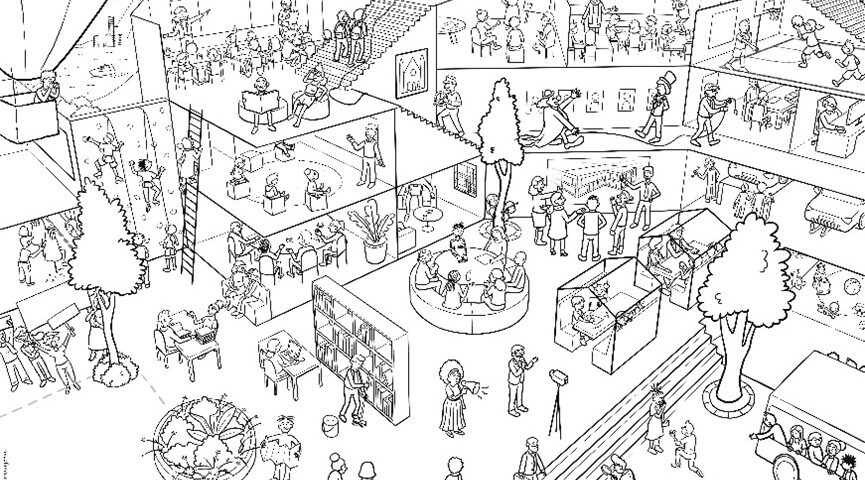Creative research as a starter for professional dialogue

‘So how do you feel that lesson went?’ Patterns of discursive interaction in post-lesson debriefs
January 15, 2024
Towards diversity-responsive teacher educators: reflections of a professional development initiative
March 11, 2024Creative research as a starter for professional dialogue

Scientific research has the ambition to ‘reveal the truth’ and ‘expose reality’. At the same time, researchers are very much aware that – especially in social science – truth and reality are constructed entities and can hardly be described in objective and final ways. Being an educational researcher, over the years my surprise has grown about where that basic insight that reality is a social and situated construction – has taken us. In most educational research the researcher still is – or pretends to be – the outsider, the distant observer making objective notes. We collect questionnaires with scaled items and outcomes, we take interviews in semi-structured ways excluding the moment and the situation from the protocol. And we represent educational practice as cleaned from the chaotic dust with which most educational practices is covered. Under the umbrella of practice-based or practice-oriented research, the line-up might be a little bit different, or at least presented as such. But essentially: we stick to methods that clear the air, overcome all outliers and subtle differences, and mainly represent that head rather than the heart of things… in averages and standard deviations that seem impressive and open – if you have collected “the right data” a box of even more complicated quantitative tricks. Trick or treat…?
Crystallized truth
My personal belief and experience as an educational researcher is that there is almost no objectivity in designing, realizing and researching educational practices. It is therefore that I have embraced the paradigm of crystallization that takes as a starting point that ‘covering the same ground from different angles illuminates a topic” (Ellingson, 2009, p.15). These different angles encompass the widest range of ways of knowing possible seeking the enriching combination of art and science. In a research project Expedition Teacher Agenda we have experimented in its truest sense with forms of artful science and scientific art. Examples of creative research methods we developed and used are a colouring picture of the educational system, visualizing roles and functions in education in a metaphoric and ambiguous way. With the colouring picture, we collected data on professionals’ perceptions of themselves and important others in their personal educational work environments. Another example is the onboarding of fifteen artists in our project Sleeping Beauty, in which we explored the far future of (teacher) education. The artists were invited to translate our findings into literal ‘images of the future’. Combining two different ways of looking at the world – art and science – we experienced their complementarity of showing (art) and telling (science), of evocative moments (art) and patterns (science), of emotional embodied sense-making (art) and cognitive knowing (science).
Dialogical power
We have found that creative research methodologies engage participants in other ways than questionnaires and observations do. They invite people in, they open people up, they make professionals curious of each other, and they radiate research as a fun and educational exercise. They turn practice-based research into dialogical situations for continuous professional development. They reveal the performative nature of research (Ostern et al, 2021) and generate impact during the research process as much as through their findings.
References
Ellingson, L.L. (2009). Engaging crystallization in qualitative research: an introduction. London: Sage Publications.
Ostern, T.P., Jusslin, S., Knudsen, K.N., Maapalo, P., & Bjorkoy, I. (2021). A performative paradigm for post-qualitative inquiry. Qualitative Research, 1-18.




